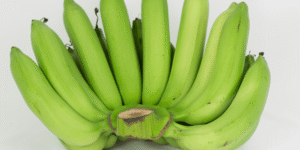Outie Belly Button Causes and When To Worry
Outie Belly Button Causes and When to Worry
Estimated Read Time: 4 minutes
Outie belly buttons are usually harmless and often result from natural differences in how the umbilical cord heals. However, in some cases, they may indicate an underlying medical condition. Here’s what you need to know.
What Causes an Outie Belly Button?
Natural Healing Process
The belly button is essentially a scar formed after the umbilical cord stump falls off, typically within the first 1–2 weeks of life. In most cases, the skin heals inward, creating an “innie.” But in some people, the tissue heals outward, forming an “outie.”
Medical Conditions
While outies are often just cosmetic, certain medical conditions can lead to a protruding navel:
-
Umbilical Hernia – Occurs when part of the intestine pushes through a weak spot in the abdominal muscles.
-
Umbilical Granuloma – Involves inflamed tissue near the umbilicus after birth, potentially due to infection or improper healing.
How Common Are Outie Belly Buttons?
Roughly 10% of people have an outie belly button. It’s a completely natural variation and typically not a cause for concern unless associated with pain or swelling.
Common Myths About Outie Belly Buttons
Myth: It’s Due to Poor Umbilical Cord Care
Many believe that outies result from how the cord was cut or how the stump was cared for. However, medical research shows that these factors rarely influence whether a belly button becomes an innie or an outie.
Myth: You Can Prevent an Outie
There is no guaranteed method to prevent an outie. The way your skin scars and heals is largely influenced by genetics and chance.
When Should You Worry About an Outie Belly Button?
Umbilical Hernia Symptoms
Umbilical hernias are relatively common, affecting about 1 in 5 infants. Signs include:
-
A soft bulge near the belly button
-
Bulge becomes more noticeable when crying or straining
-
Bulge disappears when relaxed
-
Possible stretching of the skin
In most cases, these hernias resolve on their own. If the bulge becomes painful, hard, or changes color, medical attention is necessary.
Umbilical Granuloma Symptoms
Granulomas typically appear after the umbilical stump falls off. Symptoms include:
-
A small, moist, red lump near the belly button
-
Possible discharge or irritation
Treatment options may include:
-
Application of silver nitrate
-
Double-ligature (suture) method
-
Salt application for drying
-
Watchful waiting in mild cases
Can an Outie Belly Button Be Fixed?
Yes, if desired for cosmetic reasons. The procedure is known as umbilicoplasty, often performed during a tummy tuck (abdominoplasty) or as a standalone surgery. This is common after pregnancy or to correct piercing scars.
Outie Belly Buttons During Pregnancy
Pregnancy can temporarily turn an innie into an outie due to abdominal stretching. This usually returns to normal post-delivery, though in some cases, it may remain more prominent.
Final Thoughts
Outie belly buttons are less common but completely normal. Whether your navel is an innie or outie depends on how the umbilical stump healed—not on post-birth care. While usually harmless, consult a healthcare provider if there’s swelling, pain, or sudden changes.
Frequently Asked Questions
Are Outie Belly Buttons Rare?
Only about 10% of people have an outie. While less common, they are not abnormal.
Why Does My Belly Button Hurt?
Pain may result from an umbilical hernia, infection, or inflammation. See a doctor if you notice discomfort, redness, or swelling.
Can You Fix an Outie Belly Button?
Yes, cosmetic procedures like umbilicoplasty can reshape the navel, often during a tummy tuck.








